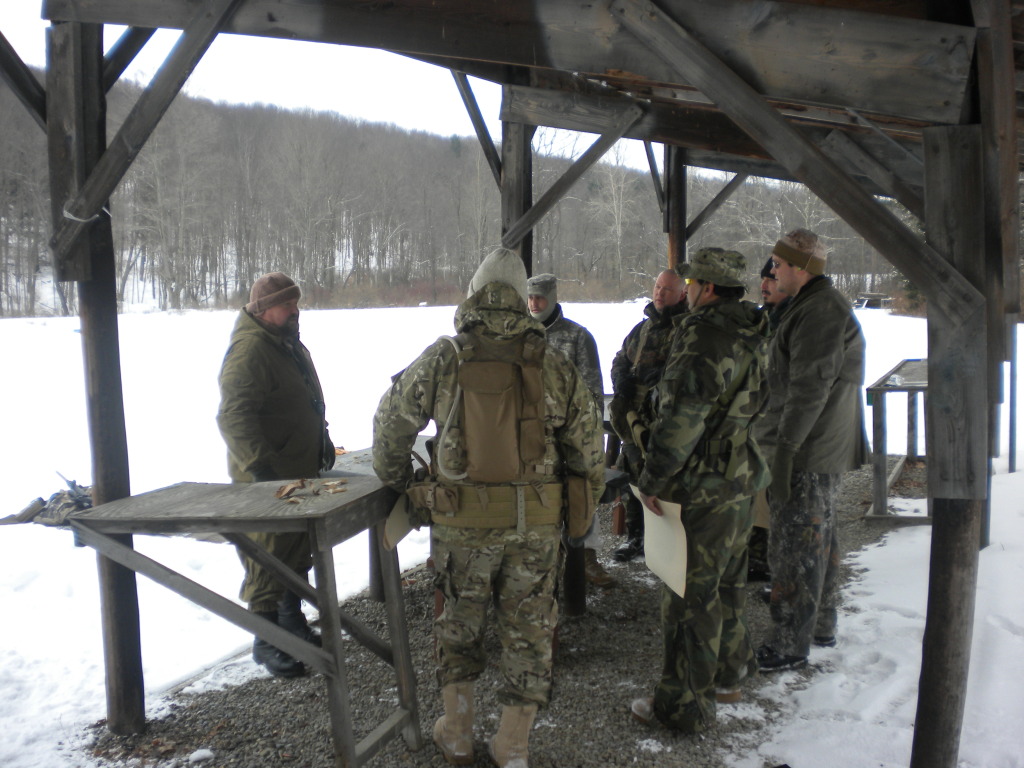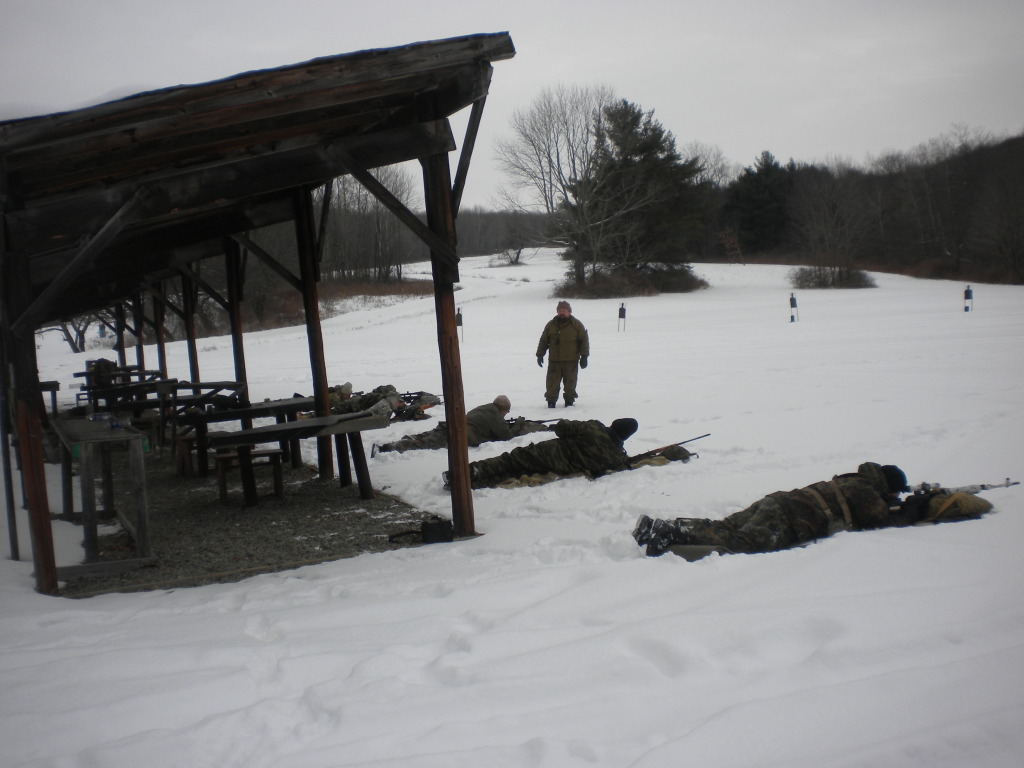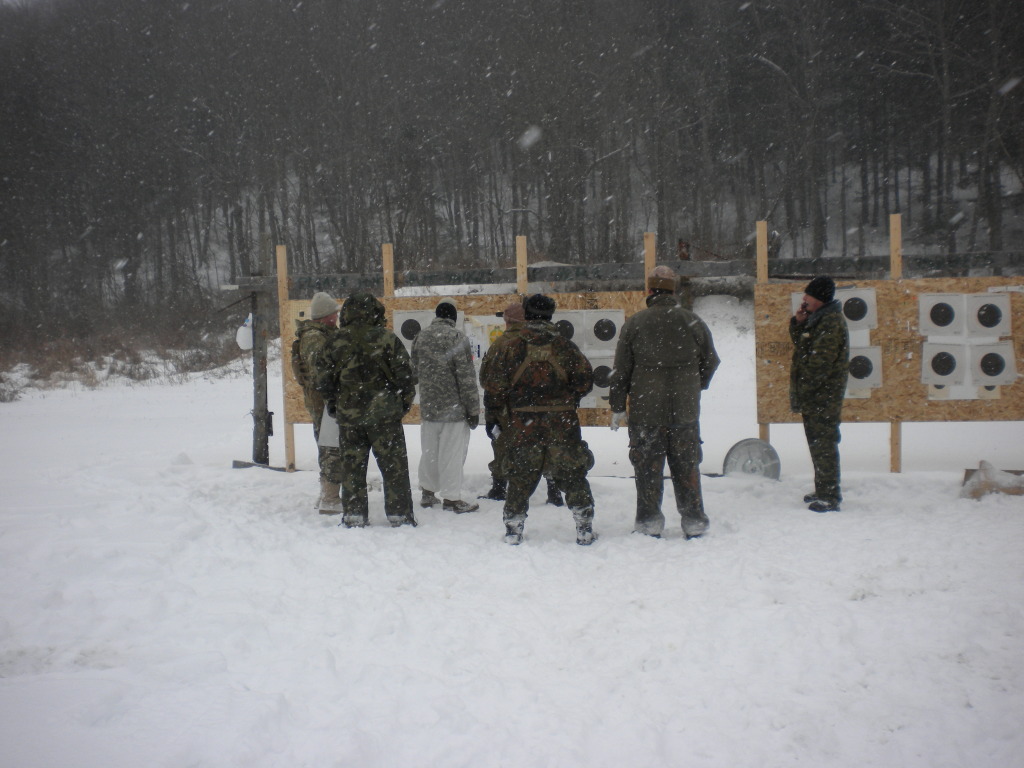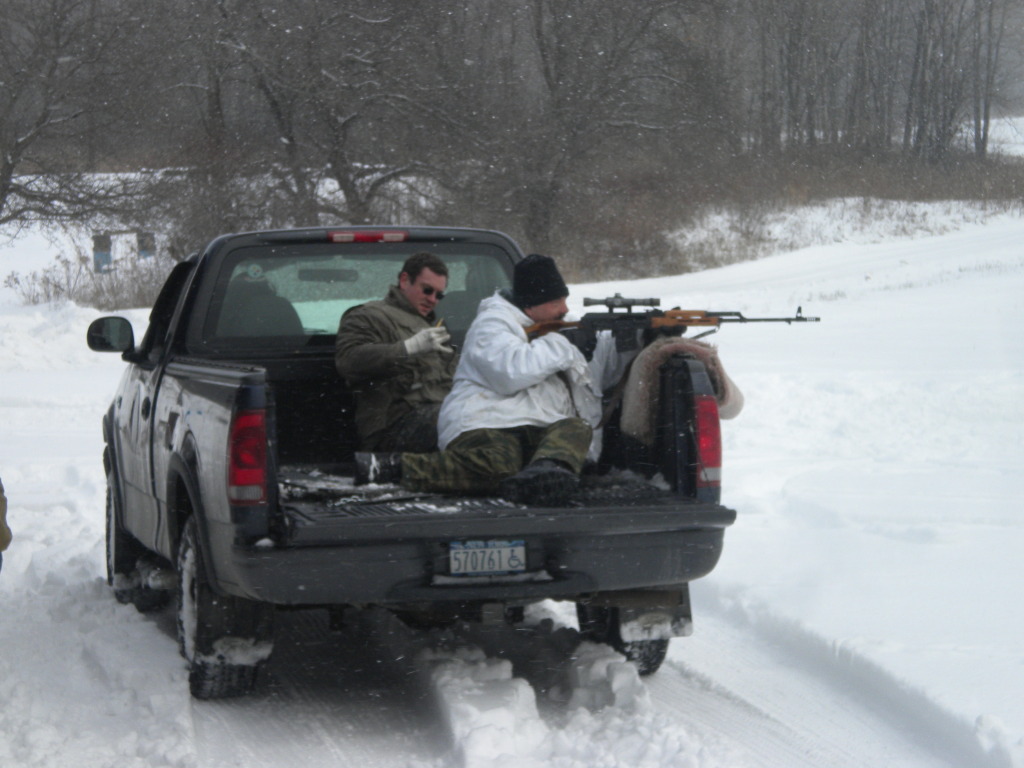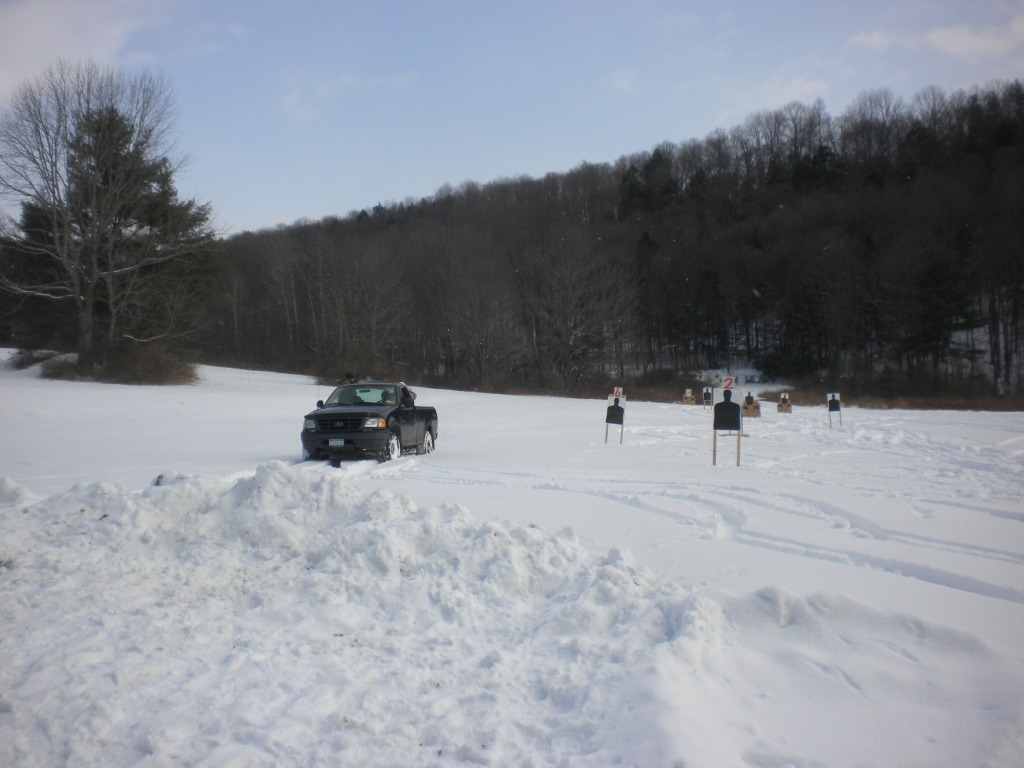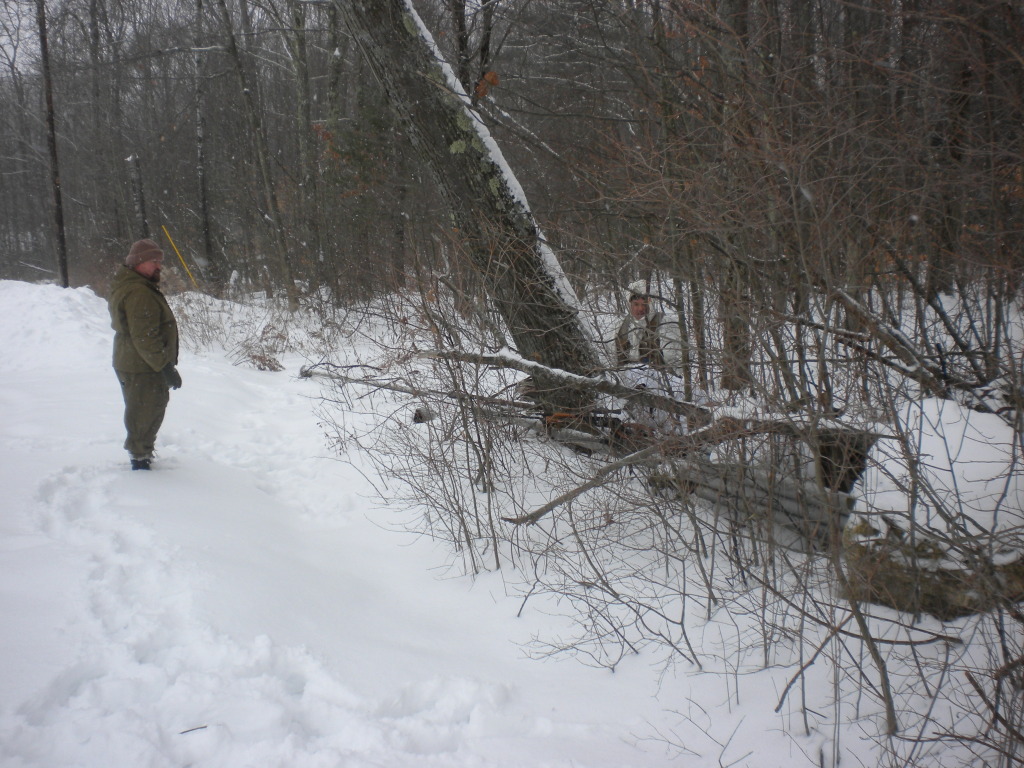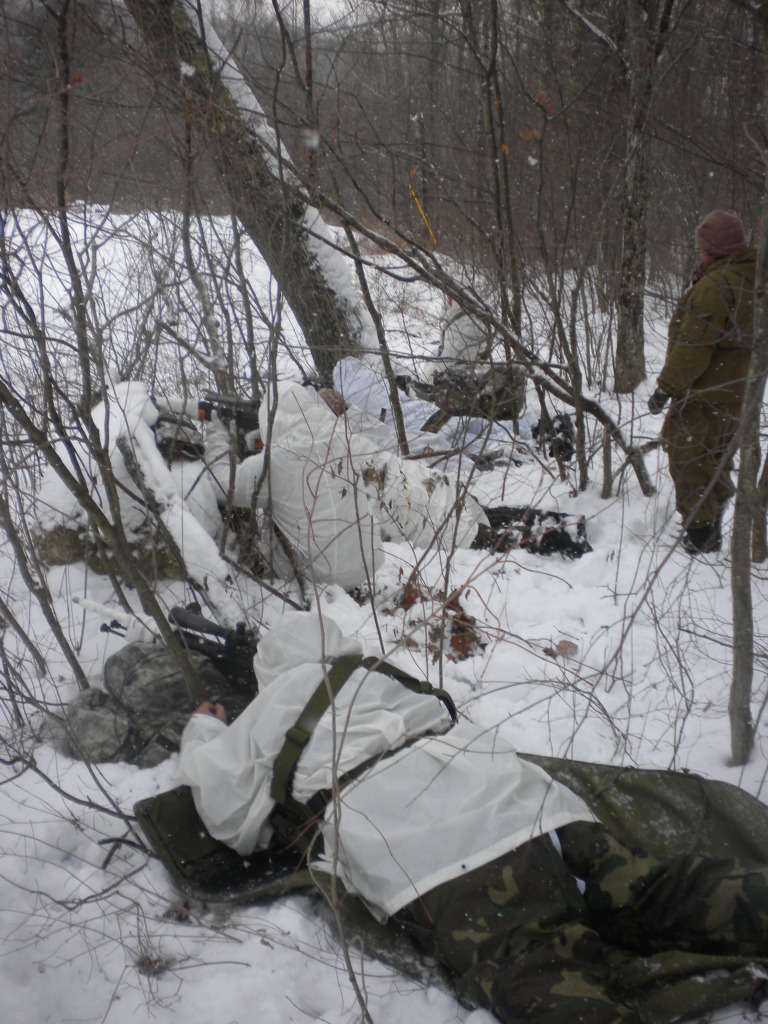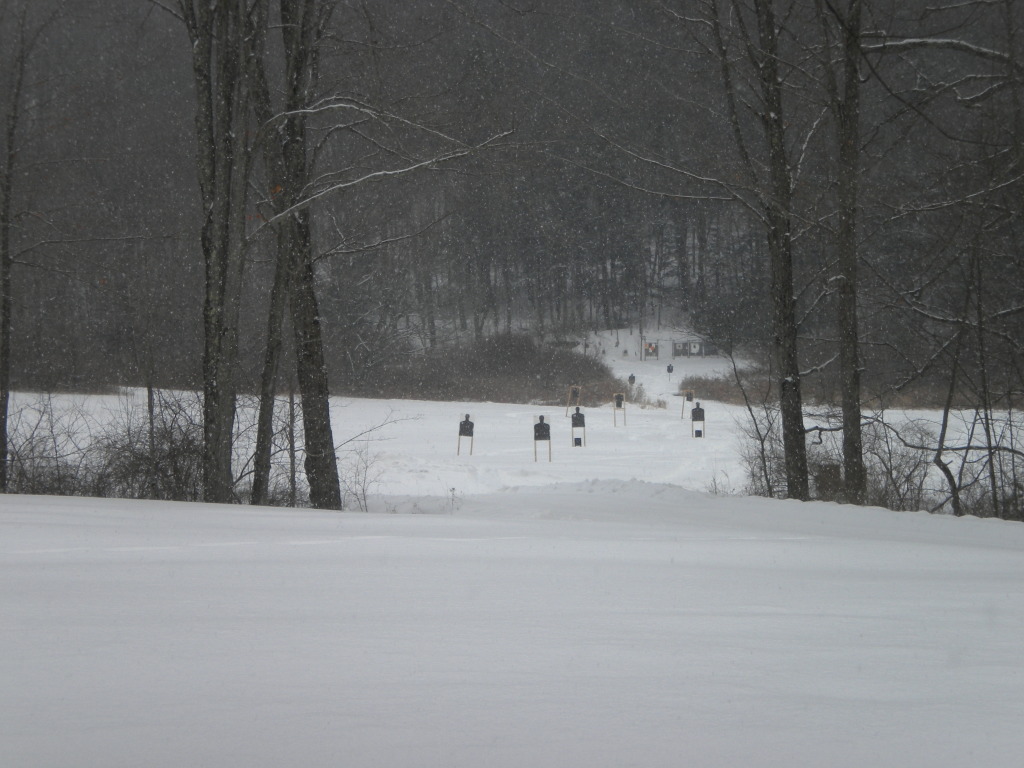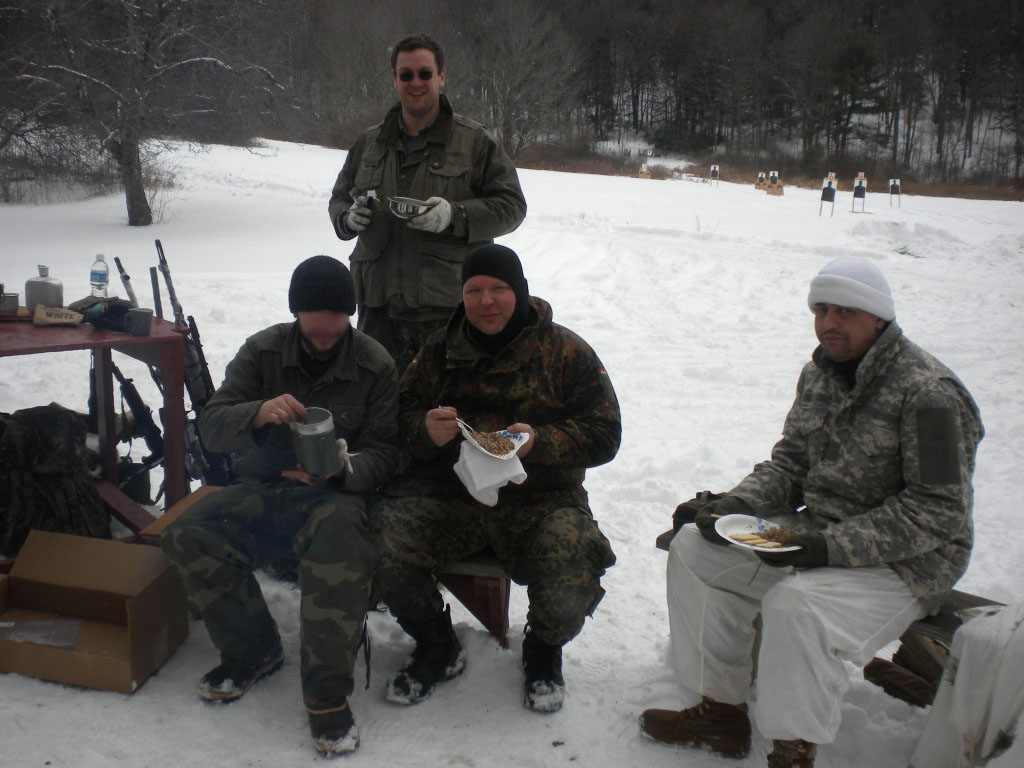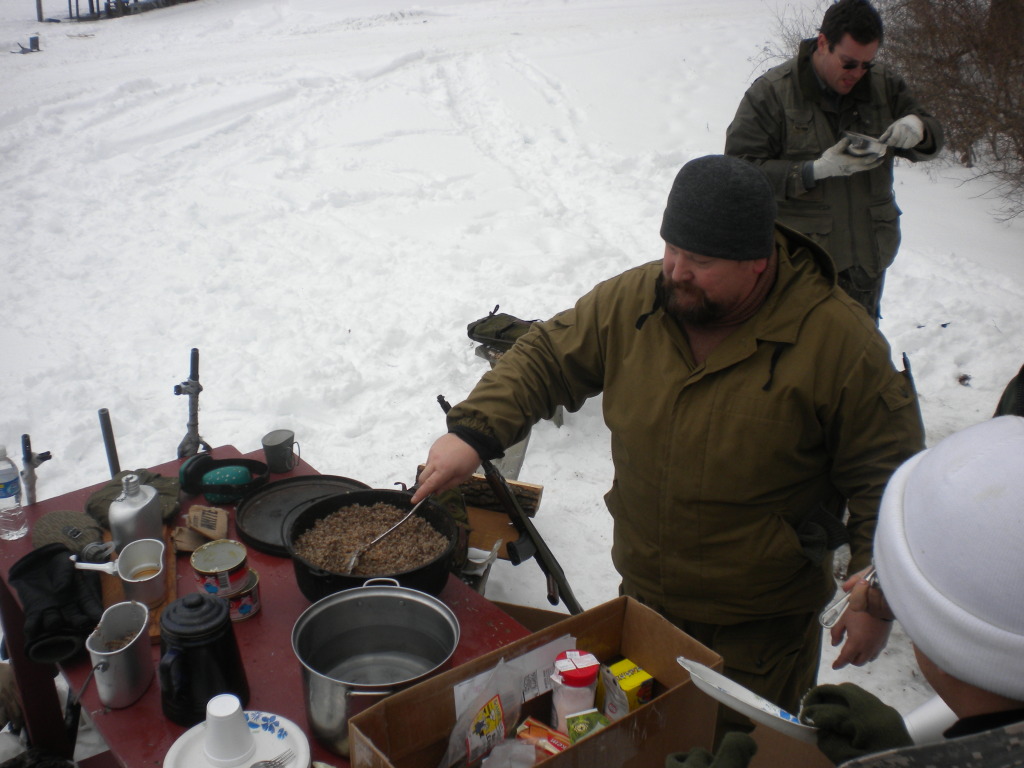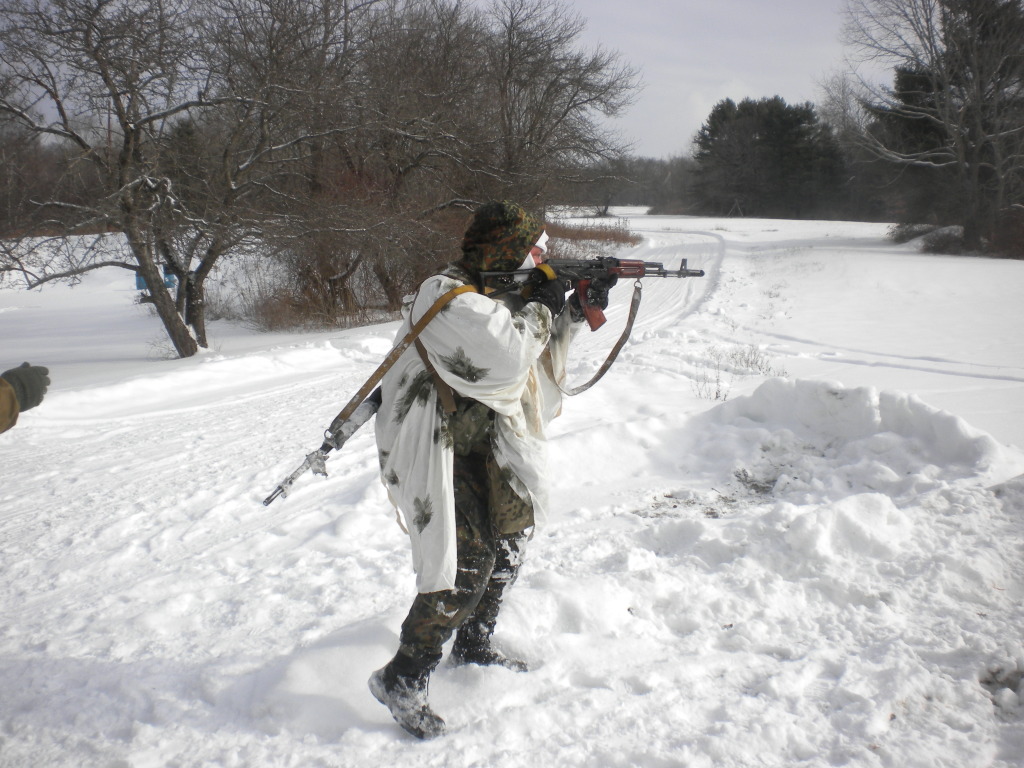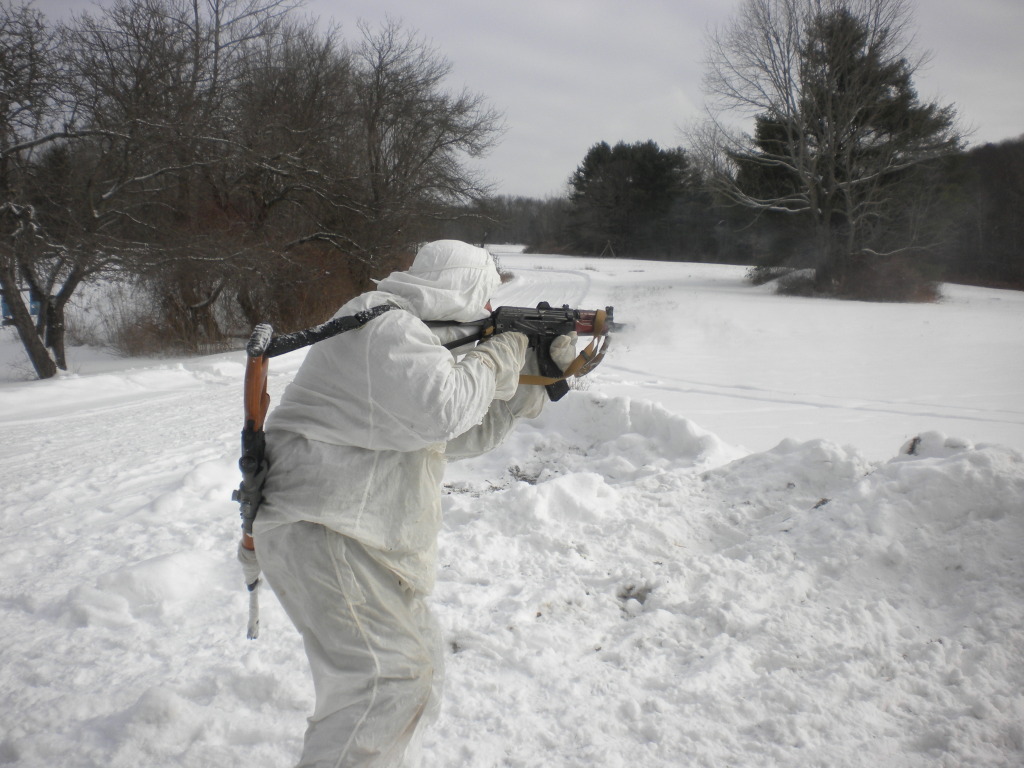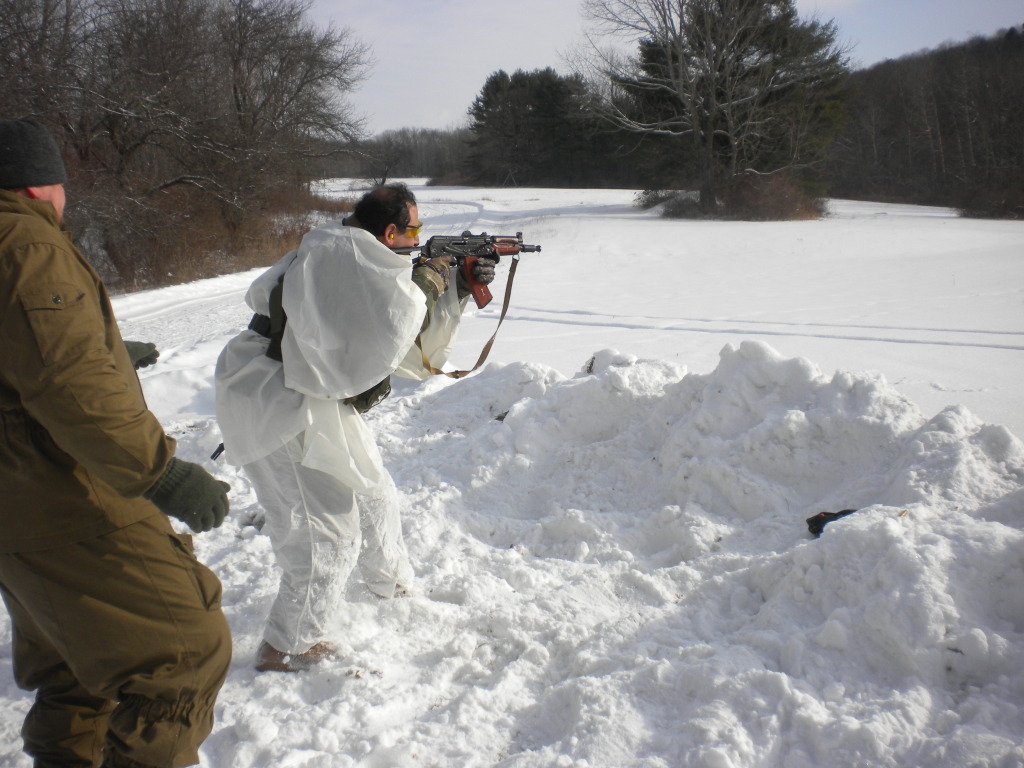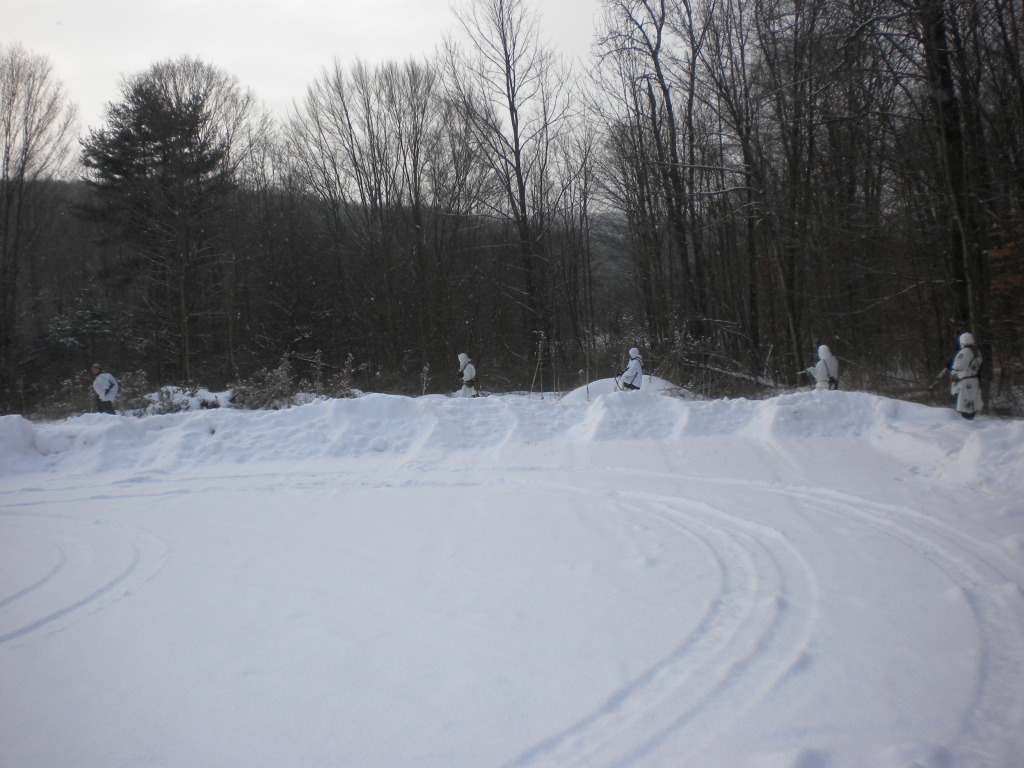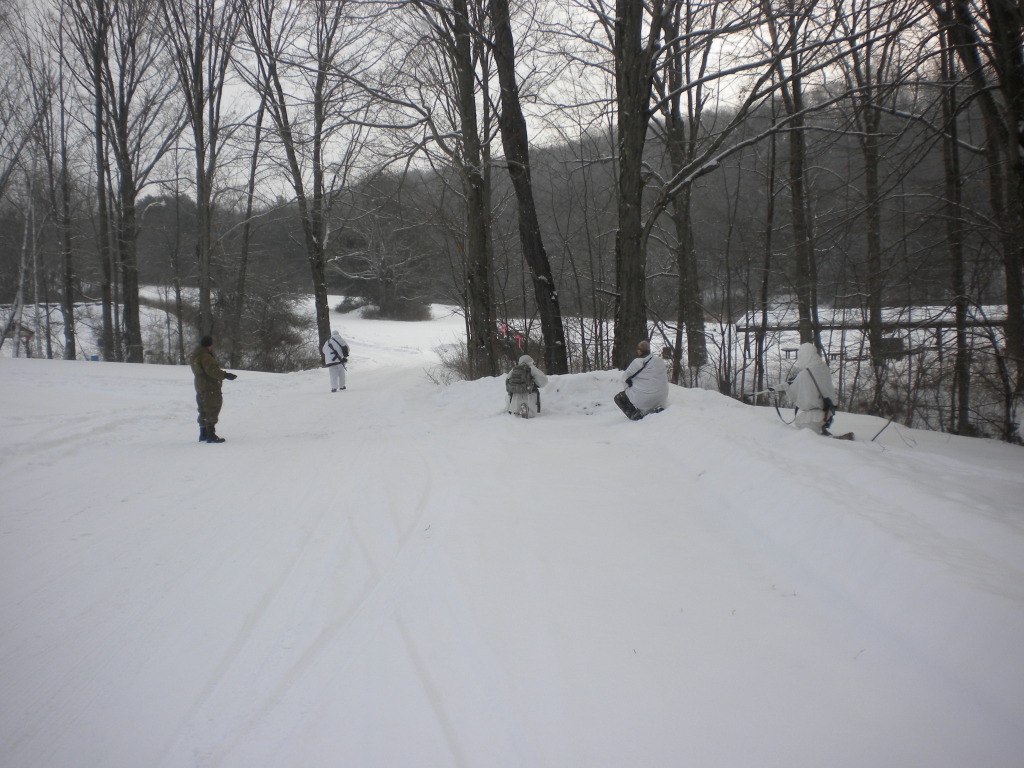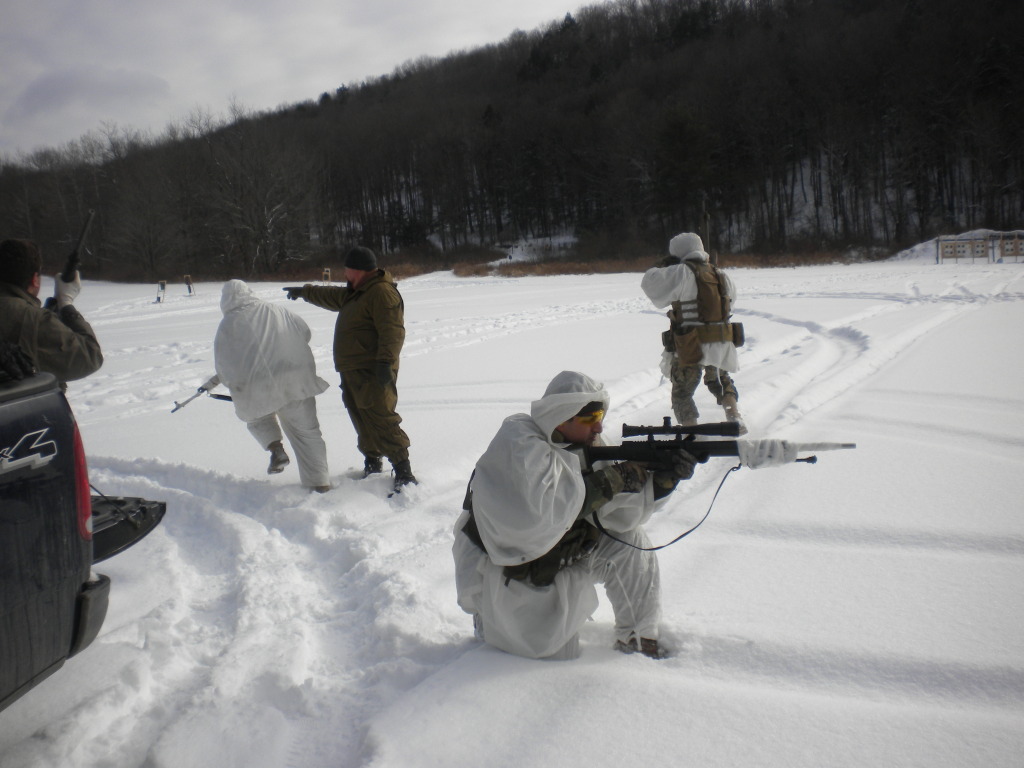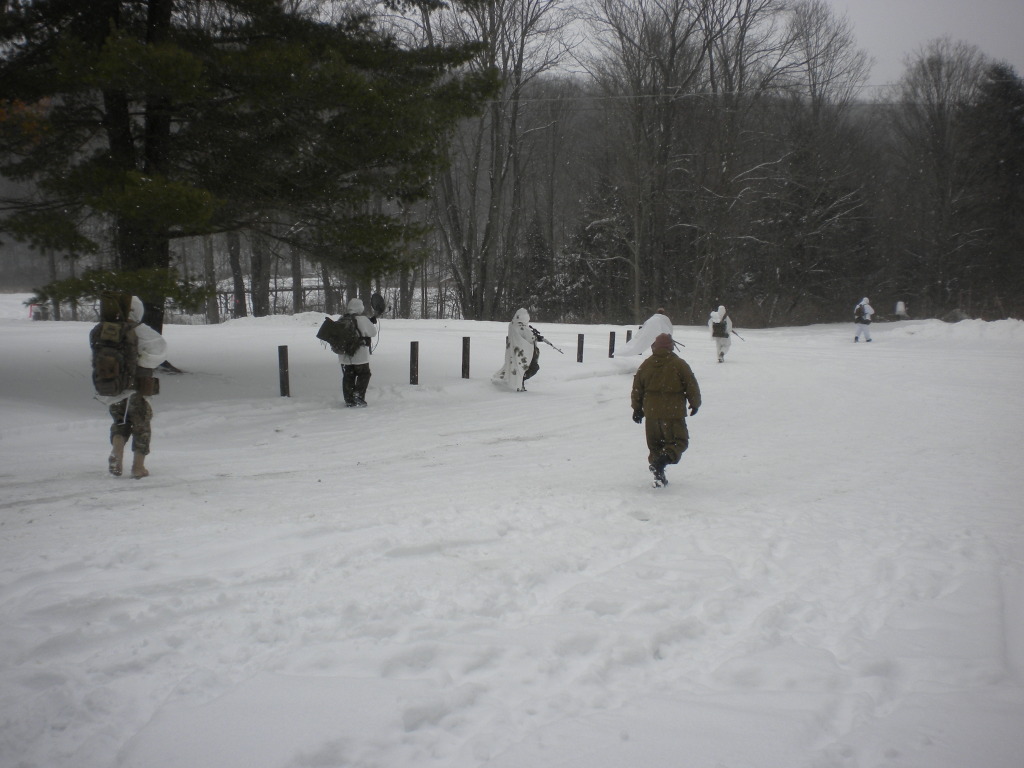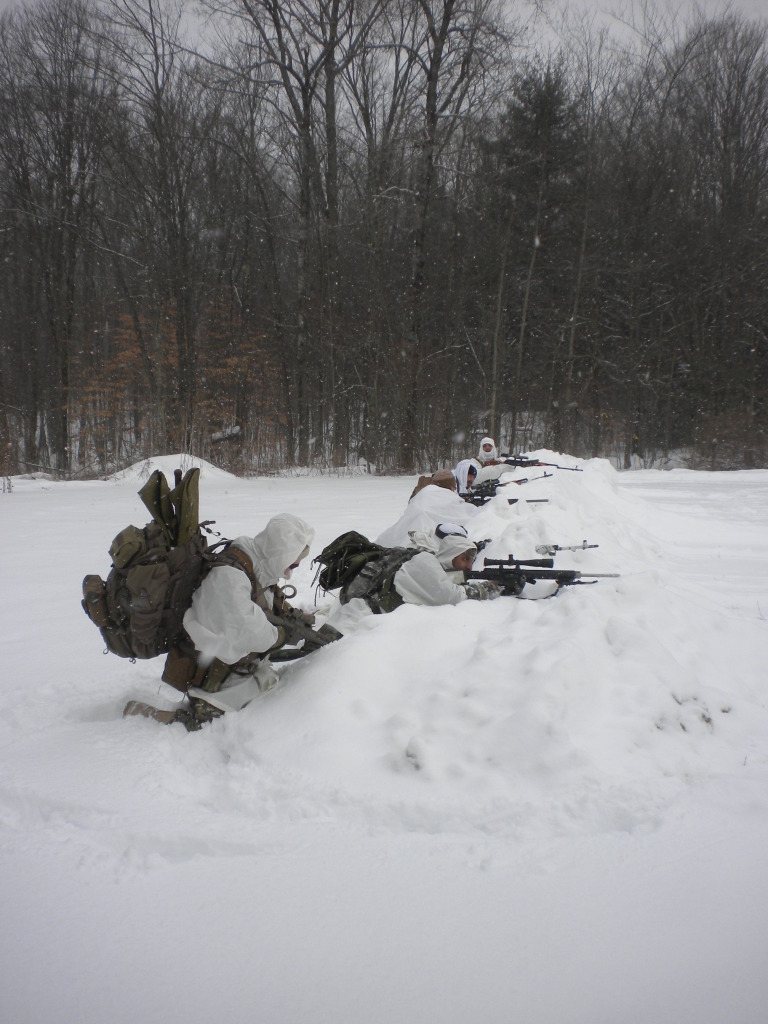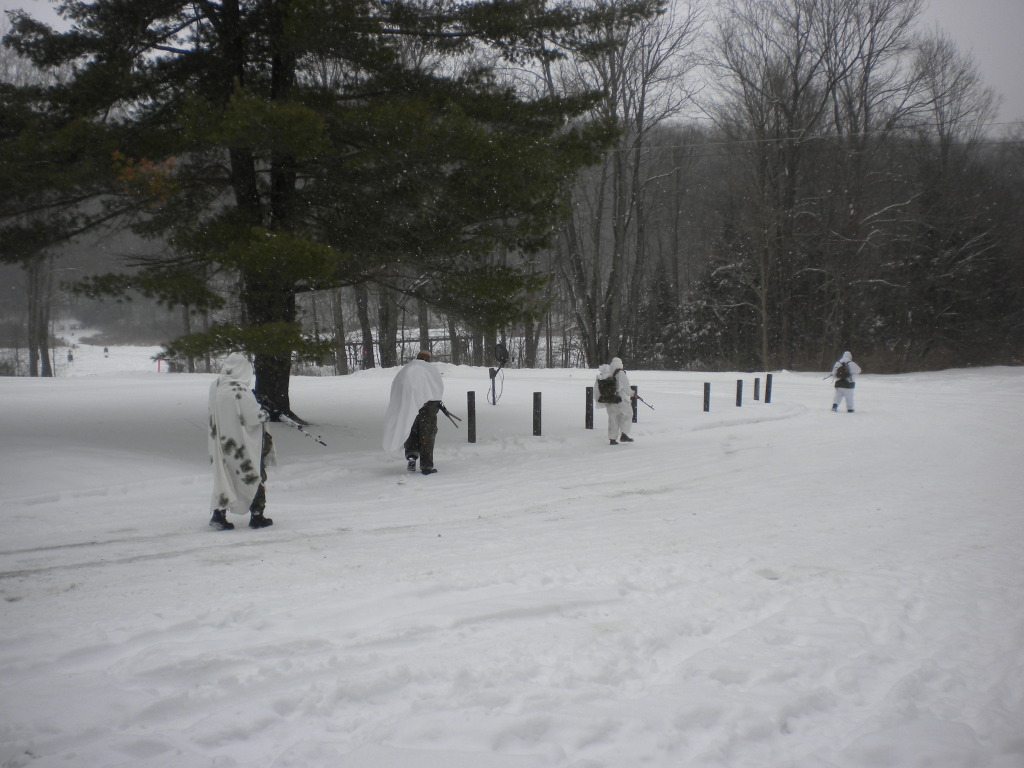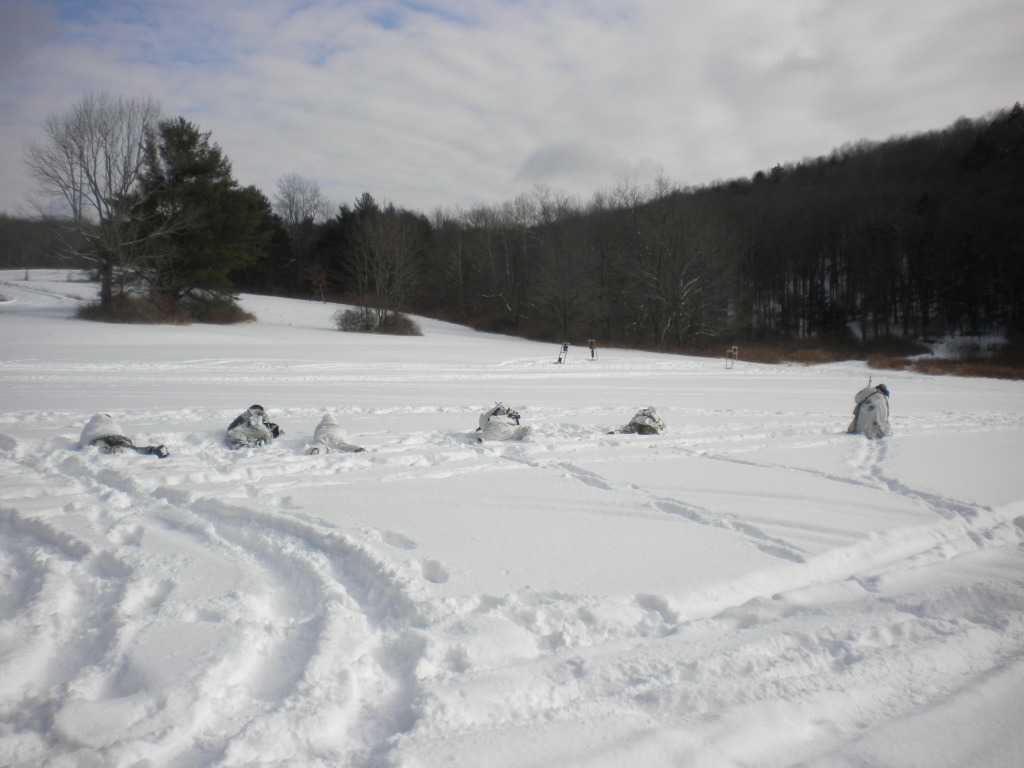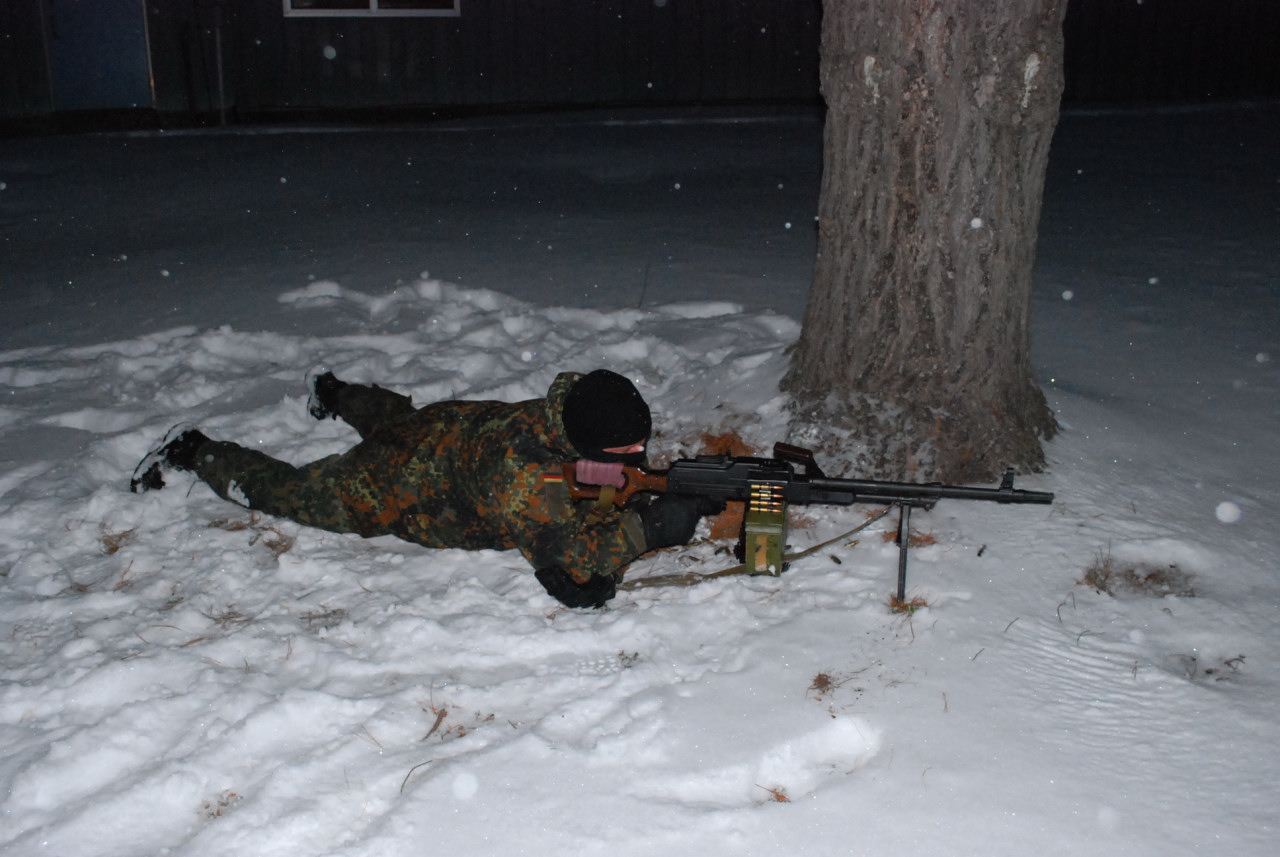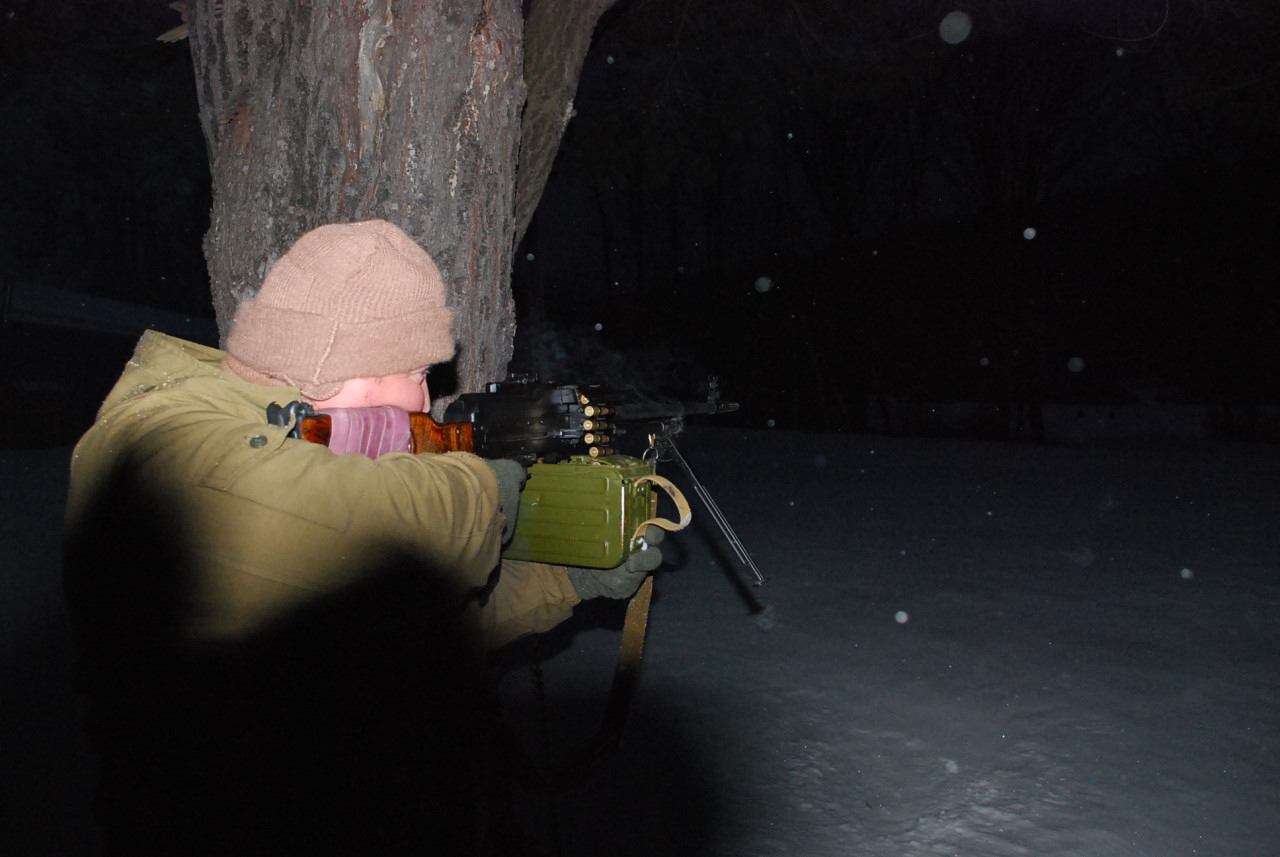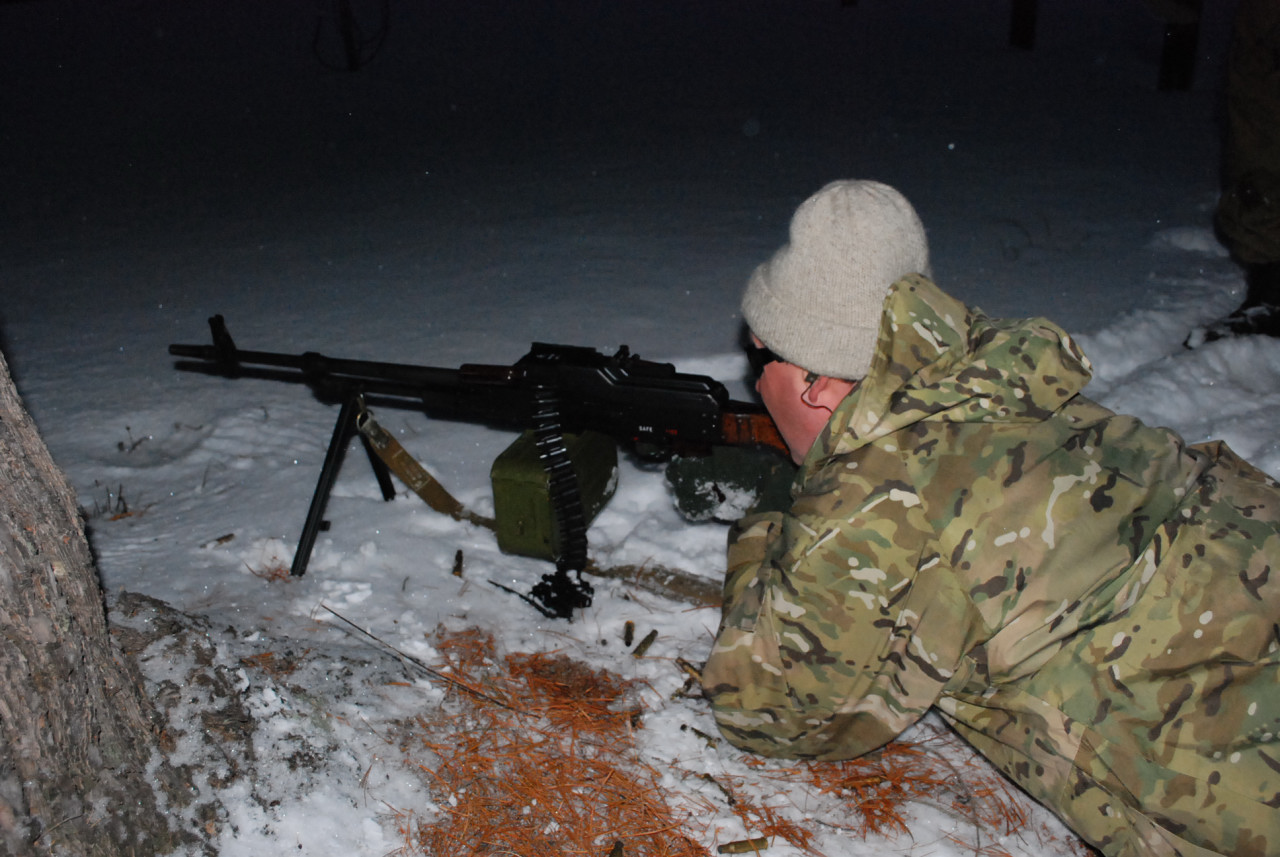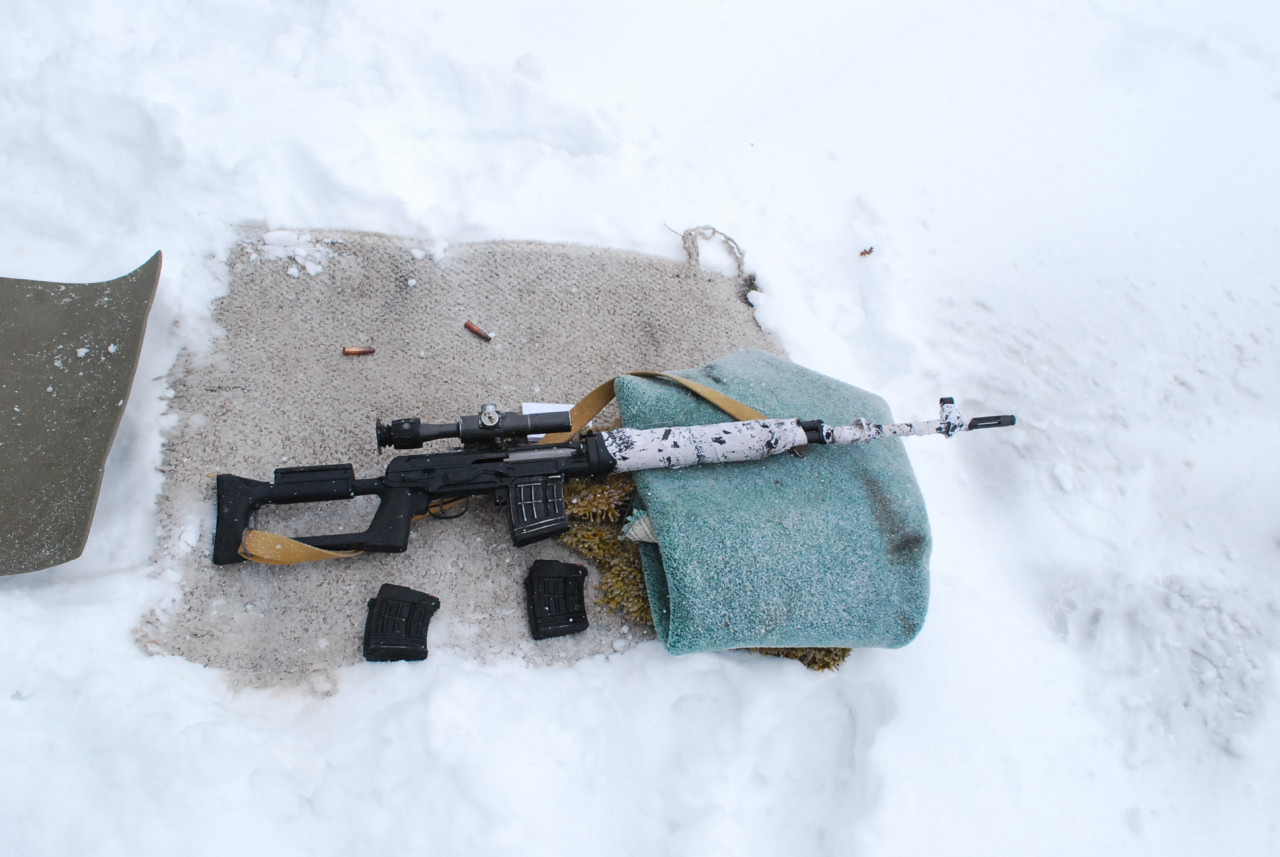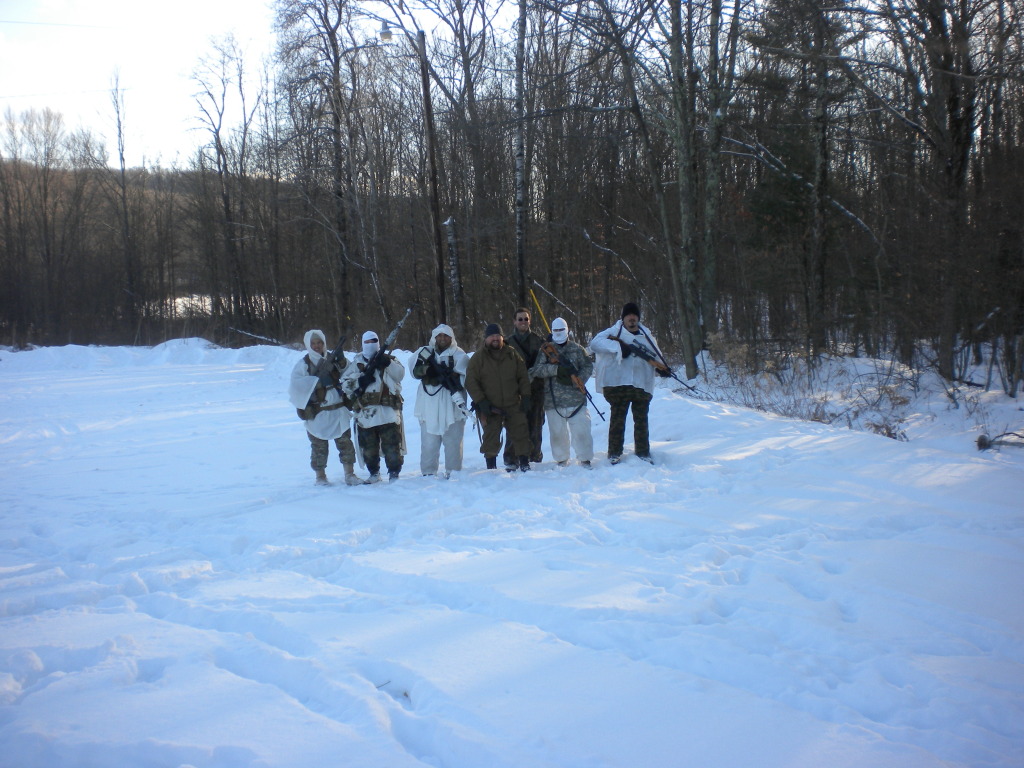
Behind Lines
is Marco Vorobiev's training company and this year he
decided to do a full-on winter course detailing many
of the tactics and techniques used by the Spetznaz in
Afghanistan during the 1980's war. Marco served as a
Dragunov marksman for about 2 years near the end of
the conflict and this class was designed to show some
of how they trained and fought in the snow.
First thing about Marco is how
down to earth he is and how easy he is to get along
with. He's friendly and makes a point to talk to
students on their level of expertise, he doesn't act
like you have to be a high speed operator to
understand what he's teaching and also listens well to
questions. Just like most of the exceptional soldiers
I've met he struck me as being highly intelligent,
well versed in his material and able to explain things
so they made sense and you could take something away
from the training. I personally enjoyed his teaching
style and what he had to offer, and the class itself
was full of things that I was interested to know more
about. He had a good way of speaking to the group
about the topic at hand and also tailored the one on
one instruction on how the topic applied to each
student.
I discovered the class wasn't
really about the Dragunov at all, it was all about how
a DMR type rifle is employed...the specific rifle
doesn't matter, only what it can do and how it's used.
In essence the Dragunov itself wasn't what was
important and you didn't need one for the class. We
had 3 AR's, 2 PSL's and only one Dragunov, IMO we all
did about the same shooting wise. Another thing is
that this course wasn't a beginner's marksmanship
class, it was assumed that students had a certain
level of proficiency with their chosen rifle. At first
I was more or less expecting some deeper insight into
the SVD and PSO scope but came to find out that really
none of that was covered. I realized pretty quickly
why...there actually isn't anything magical about the
rifle or scope, everything you need to know about them
is basically common sense and the Russians really
don't have any mysterious tricks up their sleeve...
that he taught us anyway
I'll also say that the class was
really about simplicity...rolling around in the snow
for 2 days will really highlight flaws with your gear
choices, weapon handling abilities and even the choice
of rifle to some extent. It wasn't how to be a
commando, it was about how a rfle squad moves and
deploys in combat conditions and how to engage targets
from short range to long across the width and depth of
an engagement area. Much of it was plain old horse
sense and focused on simplicity rather than flashy
moves. I found it to be very enjoyable and learned a
few interesting shooting techniques. A subtler point
that stuck out to me was about movement...both yours
and the target's and how to think about the DMR in a
less than pretty one shot one kill mentality.
Day one started at 100m checking
our zero and making minor adjustments. A perfect zero
wasn't required for what was being taught, rather the
principle of rapid relatively accurate fire was most
important, not being able to put two rounds in the
same hole. The first series of exercises focused on
shooting multiple targets rapidly. We had 6 lanes set
up (one for each of us) with 4 small targets per lane.
Marco would hand out a shooting order...1.3, 2.4, 5.1
and 6.2 for example. That mean your first target was
in lane 1 and you were shooting at small circle #3.
Second target was lane number two, circle #4, 3rd
target lane 5 circle #1 and so on. We had 35 seconds
to shoot 24 rounds which for a Dragunov meant two
reloads...at 3-5 seconds per reload I was looking at
about 25 seconds for 24 rounds. Wasn't easy, the best
I did was 22 rounds and 2 mag changes. I could usually
get off 20 rounds and be ready to fire the first round
of the last mag right as the whistle blew and time
ended.
What surprised me about this
exercise was how accurate I was at speed and how
relatively tight the groupings were at that rate of
fire. I was getting most of my rounds into a 6" circle
on each target and I literally had only enough time to
put the chevron in the black and squeeze off two
rounds quick before I moved to the next target. What
the technique demonstrated was that many things in
shooting are automatic when done at high speed,
basically the less you think the better you do as an
average. No you don't hit one MOA at that speed but
you are able to put two kill shots into a target
rapidly while using a scope...they don't have to be
pretty, they just need to get the job done - again,
nothing fancy, just a practical way to take advantage
of the semi automatic design of the SVD. Another
aspect of the drill was to acquire multiple targets
spread across the width of an engagement area...its a
lot harder to swing the muzzle back and forth across
many targets when shooting at that speed, and that
lesson is one I found particularly valuable. It's a
complete break from the way I've learned to shoot a
scoped rifle which is to take the time to breath, aim,
squeeze one round off and then shoot again. This is
much more like the Pavlovian response beaten into me
by the US Army M16 training where as soon as you see a
target you tend to reflexively aim and shoot, the
fundamentals are there in the background and should
work automatically. They definitely seemed to work
during this drill.
Another thing I took away was
the rapid fire itself. Marco stressed the rapid
doubletap for getting the highest practical chance to
hit, not using deliberate slow fire for maximum
accuracy. Certain parts of doubletap are situational
dependent obviously, as in you probably wouldn't do it
if the target were at 500m with just his head exposed
for example, but his intent was to show that even an
optically sighted rifle can use the technique to good
advantage, particularly in a skirmish with multiple
moving targets. Again I wouldn't say this was a must
use technique for everyday life but it did give me
more insight into what a DMR can do in the right
hands. It was also good for increasing confidence in
your rifle...the technique works and when you see the
results it gives you a new appreciation for your rifle
because you actually can put down a high volume of
relative accurate fire. Another insight was that my
groups varied between which target I was shooting
at...certain angles of shooting gave tighter groups
than others which is something that I hadn't ever
noticed shooting at the same target repeatedly during
slow fire on the range in Texas. Not an earth
shattering observation but it demonstrated differences
in body position and the effect it has on accuracy.
During the first day we also
hopped into the back of a pickup truck to shoot on the
move. This was to simulate engaging from a BMP troop
carrier and while I really doubt I'd be on top of a
BMP during SHTF, once again I found the exercise to be
useful. It's not easy to shoot with an optic from the
back of a truck bouncing through the snow, the
reticule flies all over the place and it's hard to get
any kind of sight picture. Something new occurred as
well...eye relief on a PSO scope must be taken into
account. From the bench it's always right, in the real
world you have to learn fast how to reflexively get
lined up correctly...not easy either. Nonetheless I
hit way more than I thought I would and noticed
something subtle here too...with practice it IS
possible to hit from a moving vehicle and while it
probably won't be a common occurrence in real life, it
also increased my confidence with the Dragunov because
again, it does work and it is possible.
The first round of truck
shooting involved driving back and forth parallel to
the steel targets we set up at 100m. The second run
was much harder, which was shooting prone while
driving towards and away from many many targets. While
the first run was only two targets, the second was
about 8 spread out somewhat horizontally and to about
50-75m in depth. The truck brought us to point blank
on some and closer to 75m on others while we were
bouncing around in the back. While using the optic we
had to enage all the targets as fast as we could,
reload and continue to engage. I found this to be
really tough because of how far the rifle had to swing
back and forth due to the close ranges and how huge
the targets were in the optic. Logically I would have
thought it a better idea to use irons at closer ranges
but the point of the exercise is that your optic can
be used at any range, on any number of targets while
stationary or on the move. It reinforced the first
moving drill and added on to the rapid fire drill we
did from the prone position earlier in the day.
In actuality I can say that
because of these first exercises I will probably never
look at my drag the same way again...I won't be
subconsciously burdened with shooting it like a scoped
rifle, now view it now as a rapid fire multipurpose
rifle that can be used in several 'unconventional'
ways to good effect. It's a very interesting
experience I must say.
Marco cooked us a great lunch of
boiled buckwheat and canned ham, horrible tasting
Russian canned fish, good Russian bread, hot tea with
condensed milk and some snacks. It was a great time
with all of us shooting the sh*t and talking about
whatever, informal and friendly...kind of like an
infantry squad in the field I guess, which fit in with
the class. Food was good, the fire was nice and the
company pleasant, it was nice way to warm up and
prepare for the next round of shooting.
After lunch we got into our
winter camo gear and went on maneuvers like a rifle
squad, occupied a battle position, proofed it and did
a range card from our position designating targets,
fields of fire, distance and obstructions. This was
actually identical to my training as a tank commander
in the Army and I felt right at home. From the battle
position we engaged multiple targets from 150m to
about 350m. I was doing pretty well and then
mysteriously my zero disappeared. Thanks to good
spotting by Voron I was able to adjust fire and use my
second chevron to get back on target and continued
doing alright for the rest of the day. I'd say under
other circumstances the loss of zero might have soured
the day but I decided to roll with it just like I'd
have to in real life, overall I was happy with my
shooting and it didn't interfere with the training. It
was also during this period that I learned snow is a
real PITA for a sloppy ex tanker like me, I
continually had foggy lenses, snow in the mags and had
a couple failure to feeds due to somehow getting snow
up in the magwell. I caught Marco giving me the stink
eye a couple times and had to admit I was pretty
hamfisted with the drag, but it was a good reminder of
how to take care of your rifle because you have to
count on it. What can I say, I'm still a CDAT at
heart.
We did a few more maneuvers and
then broke for dinner and while the sun went down we
prepared for the night fire familiarization part of
the class. Marco had a 1PN34 and a 1PN58 on his SVDS
and SVD so the students could get a taste of what
Afghan era night fighting was like. I had brought my
own 1PN34 and was pleasantly surprised to see the zero
was still good. Without the lens cap the optic did
very well at 350m...targets were easy to see with just
a bit of background light from someone's car and I got
a much better sense of what the 1PN34 can really do at
night under the right conditions. I think everyone had
a great time shooting in the dark. Prior to the sun
going down Marco broke out his semi auto PKM...now
that was a blast :)
Day two involved a lot of
simulated infantry stuff...dismounting from the BMP,
combat rolls in the snow and jumping off a moving
vehicle. I think we all pretty much agreed a couple
iterations of each brought the point home...rolling in
the snow sucks. We also broke into teams of three and
did a simulated contact drill where we were 'engaged'
and had to take cover and lay down fire, duck under
cover to reload and coordinate breaking contact.
Another variation of the drill was transitioning to
our secondary weapon, in this case most of us had
AKS74's. I never would have thought it but there is a
technique to slinging the drag and deploying the AKS74
for close combat and to lay down suppressive fire to
disengage from contact. It's not easy (especially when
prone) but it is possible with practice and was
something that Marco explained the Spetznaz did in
real life. They all carried some kind of defense
weapon and had to know how to get the drag out of the
way in a hurry. Again I'm impressed with the Russians
emphasize on simplicity...despite the drag being 4
feet long it can be efficiently slung quickly and
there's a reason they learned how to use the
technique.
In the afternoon we drove up the
range a ways and shot targets out to 500m which was
the furthest practical distance we could get on the
range. Not as far as I'd hoped and not as far as I've
shot in real life but it was fun and I think good
practice for all of us. We had trouble with the 500m
target because it was lost in shadow as the sun was
going down, but I think all of us hit it at least
once. Marco had said at the beginning of the class
that we would continually improve over two days and
IMO he was right, I believe all of us got better and
certainly ended up with more confidence in our rifles.
I had a blast and I think everyone else did too.
I'd encourage anyone interesting
in more dynamic shooting to take a look at Marco's
class. It's not intended to teach fundamentals ala
Appleseed for example but I think its useful for
improving marksmanship skills under a variety of
circumstances. I certainly found the class worth the
time and money.
Pics:
Battle position and engagement
area
PKM goodness
Che Drag
